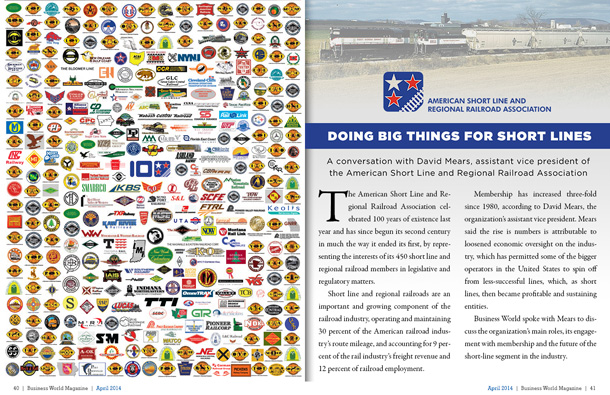
Trust, advice, and advocacy in the home building industry
Housing means a lot to many different people for many different reasons. To the home owner, it is a place to raise a family, live their life and build a future. To the builder, designer, and contractor, it is not only their job, but often a source of pride and accomplishment. The Housing Industry Association is Australia’s largest residential building organisation, with 14000 members in Victoria alone. Membership includes builders, trade contractors, design professionals, kitchen and bathroom specialists, manufacturers and suppliers. HIA provides its members with training programs and corporate services, and supports the industry through a number of different initiatives that give access to services that they would not have otherwise.
Housing is an important issue across Australia; either there is a housing shortage or the market can become depressed. It is often a buyers’ market for sure, but is it a builder’s one? Gil King, Victorian Executive Director of the Housing Industry Association, thinks so. Although there are some “rough spots” as he describes it, he does see some positive possibilities in the market.
Strong members, good advice
“The HIA is a member organisation comprised of about 40,000 members nationally and 14,000 in Victoria alone,” says King. “It provides support to members in the home building industry. We run a number of events and training programs as well as providing a number of corporate services for members such as legal, technical and planning advice.” Another aspect of what they do is that they are very active in lobbying government bodies on behalf of their members. The HIA has found that there is one main issue that continuously arises; housing affordability.
“We work as the voice of Australia’s home building industry,” says King. Through them, many of the concerns and interests of their member base are brought to the decision makers and policy authors that can make a difference to the industry stakeholders. “As I said, housing affordability is trending downwards when it comes to building costs. Housing is becoming much more expensive. Obviously this is because of a whole range of factors including the cost of labour, materials, the cost of land and the cost associated with government regulations,” reports King. This is where the lobbying power of the HIA comes into play, by changing key policies or influencing tabled motions, they are able to direct it into more positive avenues. This is important not only to those involved in the industry, King says, but for every home owner. When the availability of affordability is the driving force of the market, it is potential homeowners that are also benefiting from the HIA’s efforts.
“We minimize the effect of legislation on our members, and the more members that we have the more weight this industry association has in doing this,” says King. “This makes sure that we have the political clout that we need when advocating for these issues. One of the things that we require our members to do is to bring to our attention any individual issues that they may be experiencing. Quite often there are unintended consequences of regulations that no one can possibly have foreseen,” he says. With their members out in the field, they are the best people to report issues as they arise, and the HIA is the best avenue to get those problems addressed.
HIA provides its members with everything from legal advice to how-to-do installs in specialised areas. “If they are faced with a legal question they can call up and get some free advice on what to do in the short term, or we can refer them to a legal service. Many of these matters are often resolved before it has to be escalated, just by talking to our members we can recommend the right way to go,” says King.
HIA also provides for advice in technical information and planning, as well as occupational health and safety issues. “We have expertise in all those areas, and it comes from strong communication with our members and committees. We have a lot of experience and history in dealing with all of these matters. The advice we are able to give is very sound and has a basis in many years of experience.”
Passing the Eco grade
The Housing Industry Association runs a few programs that encourage innovation and excellence in the industry, one of these programs is the GreenSmart Program. “This program is about developing sustainable building, and this is not just about the finished product it is about making sure the method of building is sustainable. The production processes are maximised so that there is less waste on site and you are looking after the environment while building. I like to think that we are going beyond what the government regulations require with this,” says King. He says this is because many of their members are pretty far ahead of where regulations require them to be. “We support that because we believe that a free-enterprise system works more effectively than a regulated one, so if they want a particular type of innovative construction method than they should be able to get it, rather than having to follow regulations that are being imposed on everyone,” he says. King says that they support the move from five star energy ratings to the six star system, which will allow the industry to declare the energy efficient methods and materials that they are already using in most cases.
King says that they have gotten to the point that their members are pretty efficient in the use of construction materials and methodologies that curtail environmental impacts, to the point where they almost cannot do any more. “What I really see is that there is becoming a strong case for educating the public on the best ways of using an energy efficient home, because you can build the most energy efficient home in the world but if you leave all the doors and windows open, and run the dishwasher and washing machine 24 hours a day it is not going to be an energy efficient home. The use of the home is sometimes just as important as the materials and methods used to construct it when it comes to saving money and environment for the end user. King points out that individuals should take responsibility for things like this themselves, rather than letting governments put the onus on businesses and industry first. “It really requires the client to use the home correctly; I guess the best way to describe it is if you have a fuel efficient car, but if you put your foot down hard on the accelerator every time you take off from the lights you aren’t going to save that much on gas.”
One of the problems that green-technology represents is that the initial investment is sometimes higher. It is often the second time buyer, rather than the first time buyer who will invest in green technologies that are additional to the base model of housing. “It’s a choice, if people want to buy energy efficient homes they should be able to, but alternatively they should not be forced to. We don’t want people to be excluded from the home buying market simply because they cannot afford to buy an energy efficient home,” as he says, homes today are already very efficient. As of May 1st this year all the new home builds in Victoria will be required to meet the six star energy rating. “With this rating we [HIA] believe that they have reached the capacity where we can get the most out of the fabric of the building; however this will come at a cost. If they want to go beyond that rating, which many people do, many of our builder members already offer highly energy efficient homes – which could be considered 7 or 8 star rated homes,” he says. “Whatever you want, we have members that can build it. It comes down to a matter of doing what the client wants.” The entire process, says King, starts at the design stage, and must take into account the inclusion of technology that could be incorporated in the future.
Working differently
King also has noticed that lots sizes have begun to shrink. “The land sizes are getting smaller, and thus the developments are smaller,” he says. “I think the day of the huge family home is coming to an end, and people are more concerned about affordability. As long as the homes provide for good indoor and outdoor living and the features that people want to have in the home – such as hostess kitchens and television rooms – both of which are very popular right now – and it maintains affordability, the market will do well. People are very savvy and know what they want in their homes. They want a good-looking home, one that is attractive and sets itself apart. There is a market out there. But certainly the smaller home is what people are looking for right now.”
In the near future, King sees that the housing industry is one of the most flexible markets out there. “The move to building in the urban fringe is definitely one avenue that is increasing the stock of available homes,” he says. King also believes that there is a move to developing in the infill areas as well, but says that there is no one trend or answer that will define the near future. “The future is a mix of land and staged developments including apartment living, infill development, urban fringe development, and rural country development as well,” predicts King.
“We have a brand that is well recognised and thus has a lot of credibility,” says King. “We like to say that HIA can also stand for: Help, Information, and Advice. In terms of advocacy the brand carries a lot of weight with government,” he says. Their membership numbers do not tell the whole story, because a large volume builder, by way of example, counts as one member but actually incorporates hundreds of employees. This represents a huge base, and means that we have quite a lot of sway with government. King says it is not just about numbers, but experience and knowledge that official bodies have often called upon when making important policy decisions. The Housing Industry Association for members is like having a team member who has done it all, and has great connections to industry and policy makers, and for consumers, it represents trust and quality. In either case, the HIA describes quality and experience.








